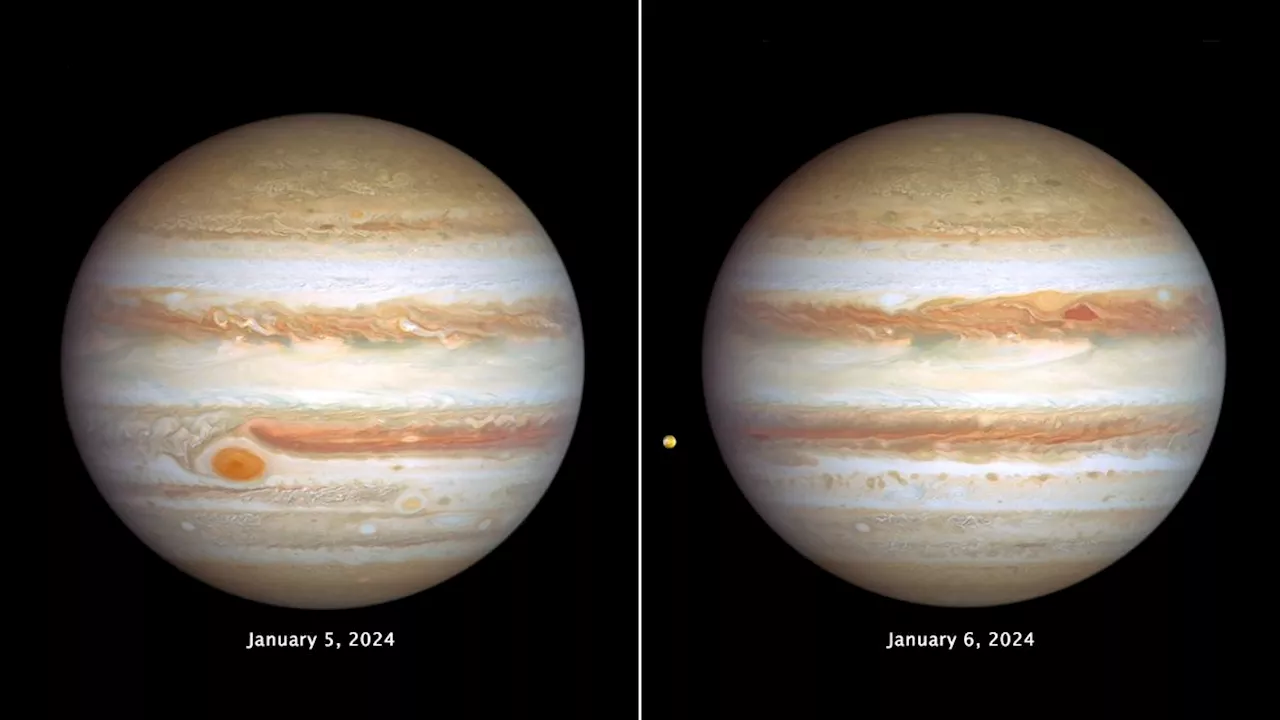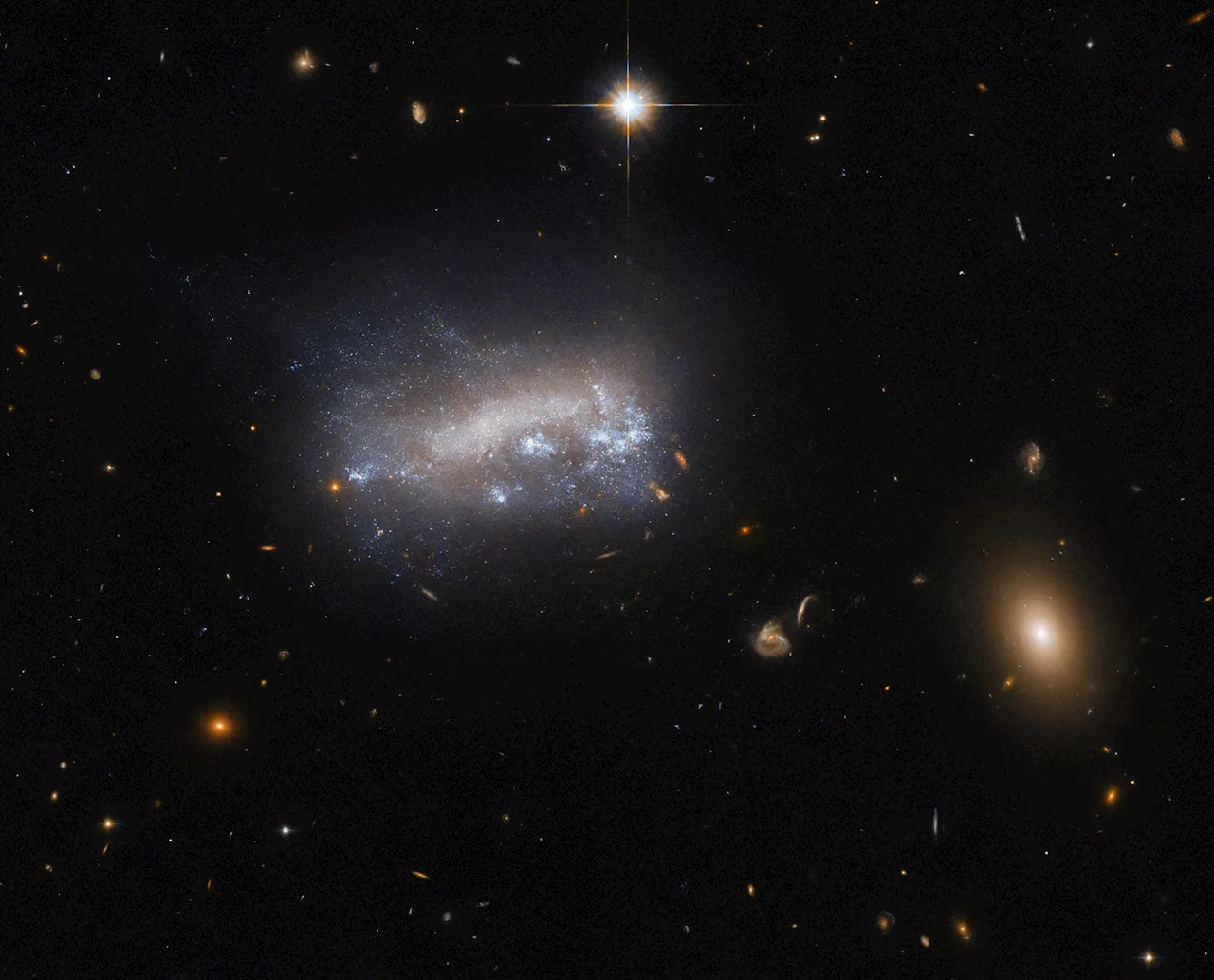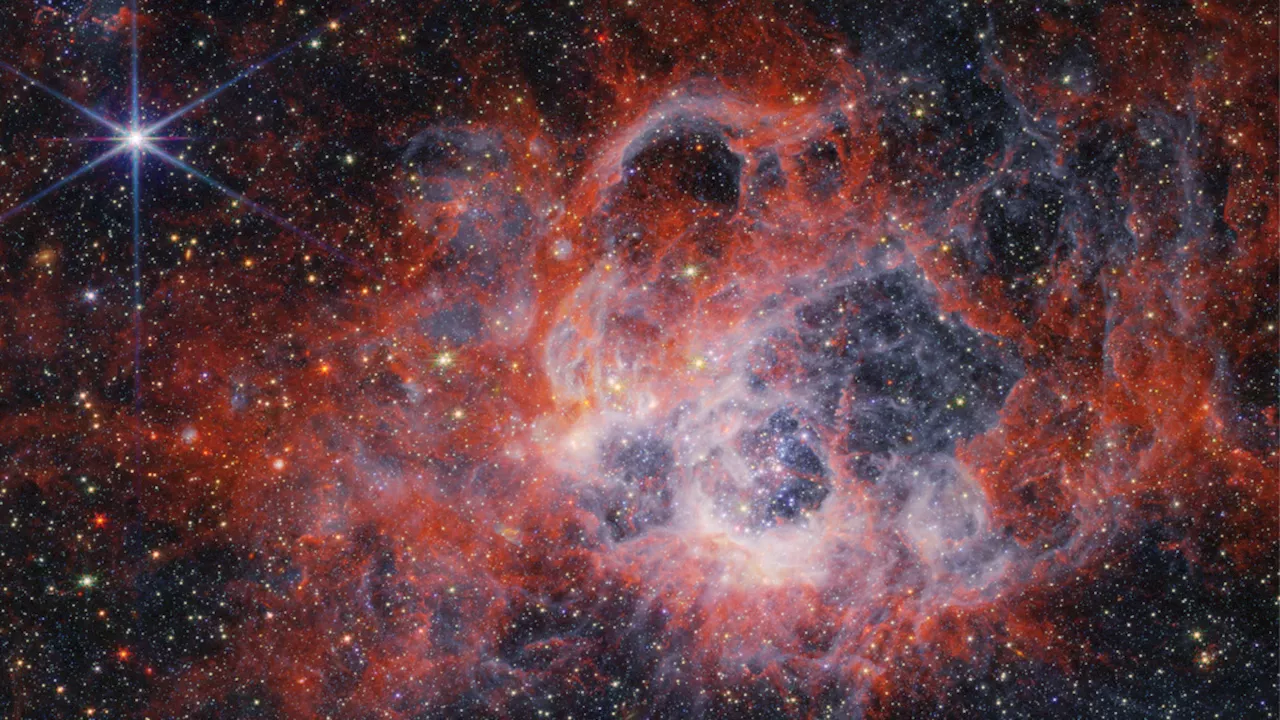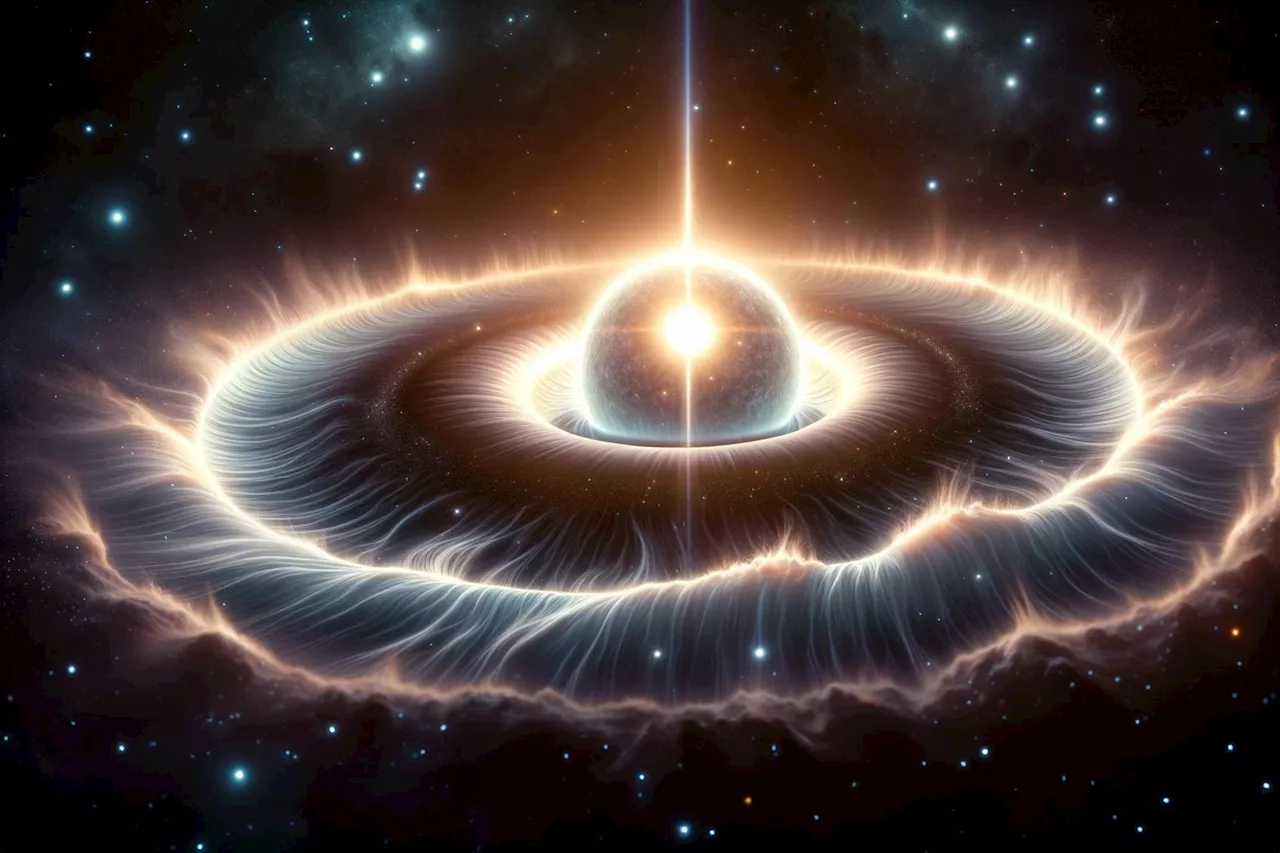Space and astronomy news
Each year, the Hubble Space Telescope focuses on the giant planets in our Solar System when they’re near the closest point to Earth, which means they’ll be large and bright in the sky. Jupiter had its photos taken on January 5-6th, 2024, showing off both sides of the planet. Hubble was looking for storm activity and changes in Jupiter ’s atmosphere..
Jupiter’s colorful clouds present an ever-changing medley of shapes and colors, as it is the stormiest place in the Solar System. Its atmosphere is tens of thousands of kilomters/miles deep, and this stormy atmosphere gives the planet its banded appearance. Here you can find cyclones, anticyclones, wind shear, and other large and fantastic storms.
The largest and most famous storm on Jupiter is the Great Red Spot. In the image on the left, you can see the Great Red Spot and a smaller spot to its lower right known as Red Spot Jr. The two spots pass each other every two years on average. In the right image, several smaller storms are rotating in alternating atmospheric bands.
“The many large storms and small white clouds are a hallmark of a lot of activity going on in Jupiter’s atmosphere right now,” said OPAL project lead Amy Simon of NASA’s Goddard Space Flight Center in Greenbelt, Maryland. This 12-panel series of Hubble Space Telescope images, taken January 5-6, 2024, presents snapshots of a full rotation of the giant planet Jupiter. The Great Red Spot can be used to measure the planet’s real rotation rate of nearly 10 hours. The innermost Galilean satellite, Io is seen in several frames, along with its shadow crossing over Jupiter’s cloud tops. Hubble monitors Jupiter and the other outer solar system planets every year under the Outer Planet Atmospheres Legacy program.
Hubble Space Telescope Jupiter Storm Activity Atmospheric Dynamics Gas Giants
United Kingdom Latest News, United Kingdom Headlines
Similar News:You can also read news stories similar to this one that we have collected from other news sources.
 Hubble Telescope spies stormy weather and a shrinking Great Red Spot on Jupiter (video)Keith Cooper is a freelance science journalist and editor in the United Kingdom, and has a degree in physics and astrophysics from the University of Manchester.
Hubble Telescope spies stormy weather and a shrinking Great Red Spot on Jupiter (video)Keith Cooper is a freelance science journalist and editor in the United Kingdom, and has a degree in physics and astrophysics from the University of Manchester.
Read more »
 Jupiter Unveiled: Hubble Captures the Giant’s Roaring Storms and Volcanic Moon IoScience, Space and Technology News 2024
Jupiter Unveiled: Hubble Captures the Giant’s Roaring Storms and Volcanic Moon IoScience, Space and Technology News 2024
Read more »
 Magellanic Spiral Galaxies Decoded: Hubble Captures LEDA 42160Science, Space and Technology News 2024
Magellanic Spiral Galaxies Decoded: Hubble Captures LEDA 42160Science, Space and Technology News 2024
Read more »
 NASA Webb Telescope captures distant star-forming regionThe James Webb Space Telescope captured two new images of a star-forming region millions of lightyears away from Earth.
NASA Webb Telescope captures distant star-forming regionThe James Webb Space Telescope captured two new images of a star-forming region millions of lightyears away from Earth.
Read more »
 The James Webb Space Telescope hones in on star-forming region in the Triangulum Galaxy (images)Robert Lea is a science journalist in the U.K. whose articles have been published in Physics World, New Scientist, Astronomy Magazine, All About Space, Newsweek and ZME Science. He also writes about science communication for Elsevier and the European Journal of Physics. Rob holds a bachelor of science degree in physics and astronomy from the U.K.
The James Webb Space Telescope hones in on star-forming region in the Triangulum Galaxy (images)Robert Lea is a science journalist in the U.K. whose articles have been published in Physics World, New Scientist, Astronomy Magazine, All About Space, Newsweek and ZME Science. He also writes about science communication for Elsevier and the European Journal of Physics. Rob holds a bachelor of science degree in physics and astronomy from the U.K.
Read more »
 Webb Space Telescope Shows Ultraviolet “Winds” Eroding a Young Star’s Protoplanetary Disk in Orion NebulaScience, Space and Technology News 2024
Webb Space Telescope Shows Ultraviolet “Winds” Eroding a Young Star’s Protoplanetary Disk in Orion NebulaScience, Space and Technology News 2024
Read more »
